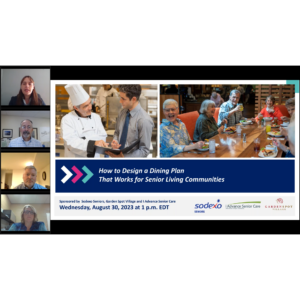How to prevent a measles outbreak in your buildings
So far this year, 84 cases of measles in 14 states have been reported to the Centers for Disease Control (CDC), most of them stemming from an ongoing, large, multistate outbreak linked to the Disneyland theme parks in California.
“It’s only January, and we have already had a very large number of measles cases—as many cases as we typically have all year in typical years,” Anne Schuchat, MD, an assistant surgeon general in the U.S. Public Health Service and director of the CDC’s National Center for Immunization and Respiratory Diseases, said in a Jan. 29 press conference.
The CDC cannot say for certain at this time exactly how this year’s outbreak began, she added. “We assume that someone got infected overseas, visited the parks and spread the disease to others,” Schuchat said. The CDC is certain, however, that “infected people in this outbreak here in the United States this year have exposed others in a variety of settings, including school, day cares, emergency departments, outpatient clinics and airplanes.”
Also, she added, this year’s outbreak is affecting more adults than is typical, and most of the adults—and children—getting the measles either weren’t vaccinated or don’t know whether they were vaccinated.
 “One question we get is, why are we seeing it in adults?” Schuchat said. “I think a good answer is, most children are vaccinated. There are a lot more adults than children, and adults travel a whole lot more than children do in general. But we will need to wait for the full statistics to come through.
“One question we get is, why are we seeing it in adults?” Schuchat said. “I think a good answer is, most children are vaccinated. There are a lot more adults than children, and adults travel a whole lot more than children do in general. But we will need to wait for the full statistics to come through.
“Fifty years ago,” she continued, “we didn’t have a measles vaccine. Those of us who are over 50 were almost universally exposed to measles and got measles and became immune to it. Since then, we have had more and more people in the United States vaccinated and protected. We may be seeing a change in the epidemiology over the next few years.”
In response to that changing epidemiology, Schuchat said, states may be revisiting policies that make it easy for some to opt out of immunization.
In the meantime, the potential spread of the disease concerns the federal agency. “Measles spreads when an infected person breathes, coughs or sneezes, and people don’t always know they are infectious because you can spread the disease before the rash is evident,” she said. “Measles is so contagious that if one person has it, 90 percent of the people close to the person who aren’t immune will also be infected. You can catch it just by being in the same room as a person with measles, even if that person left the room, because the virus can hang around for a couple of hours.”
The measles, mumps and rubella (MMR) vaccine is about 97 percent effective when people get it in two doses as intended, Schuchat said.
Take-home messages
So how can you reduce the likelihood of an outbreak affecting your facility? The “take-home messages” from Schuchat’s remarks:
- Encourage vaccination. Ensure that your employees have been vaccinated against the measles, and educate them as to the importance of vaccinating their children. Also share with residents’ family members and other visitors the importance of vaccination. “Maintaining high vaccination coverage is very important,” Schuchat said, “and it’s the best protection we have against disease outbreaks.”
- For adults who aren’t sure whether they’ve already been vaccinated, get vaccinated. “For adults out there, if you’re not sure if you have had measles vaccine or not or if you have ever had measles, we urge you to contact your doctor or nurse and get vaccinated,” Schuchat said. “There is no harm in getting another MMR vaccine if you have already been vaccinated. I do want to remind you that unvaccinated people put themselves and others at risk for measles and for complications.”
- Familiarize yourself with the signs and symptoms of measles and what to do if you spot them. Many caregivers may not have seen cases of measles in their lifetimes, Schuchat said, because the disease’s prevalence has been relatively low since the vaccine was introduced. “I’m urging all health professionals to ‘think measles,’ she said. “Healthcare professionals do need to know the guidelines for infection control and reporting of measles, and they should [make sure] that their patients are getting the best protection possible, which is on-time MMR vaccination to protect them from acquiring this virus whether at home or abroad.”
- If you suspect that you or someone you know has the measles, seek medical attention. “If people are having fever or rash, they need to let their doctor or nurse know about that, and clinicians caring for people with fever or rash need to ‘think measles’ at this point and take a travel history and take appropriate steps. I think people really need to know that you can get measles anywhere. It’s invisible.”
- If you’re sick in any way, stay at home to avoid spreading illness. “We recommend you not…get on an airplane if you’re sick or having fever,” Schuchat said.
The CDC has posted information about measles for healthcare professionals on its website.
I Advance Senior Care is the industry-leading source for practical, in-depth, business-building, and resident care information for owners, executives, administrators, and directors of nursing at assisted living communities, skilled nursing facilities, post-acute facilities, and continuing care retirement communities. The I Advance Senior Care editorial team and industry experts provide market analysis, strategic direction, policy commentary, clinical best-practices, business management, and technology breakthroughs.
I Advance Senior Care is part of the Institute for the Advancement of Senior Care and published by Plain-English Health Care.
Related Articles
Topics: Articles , Clinical











